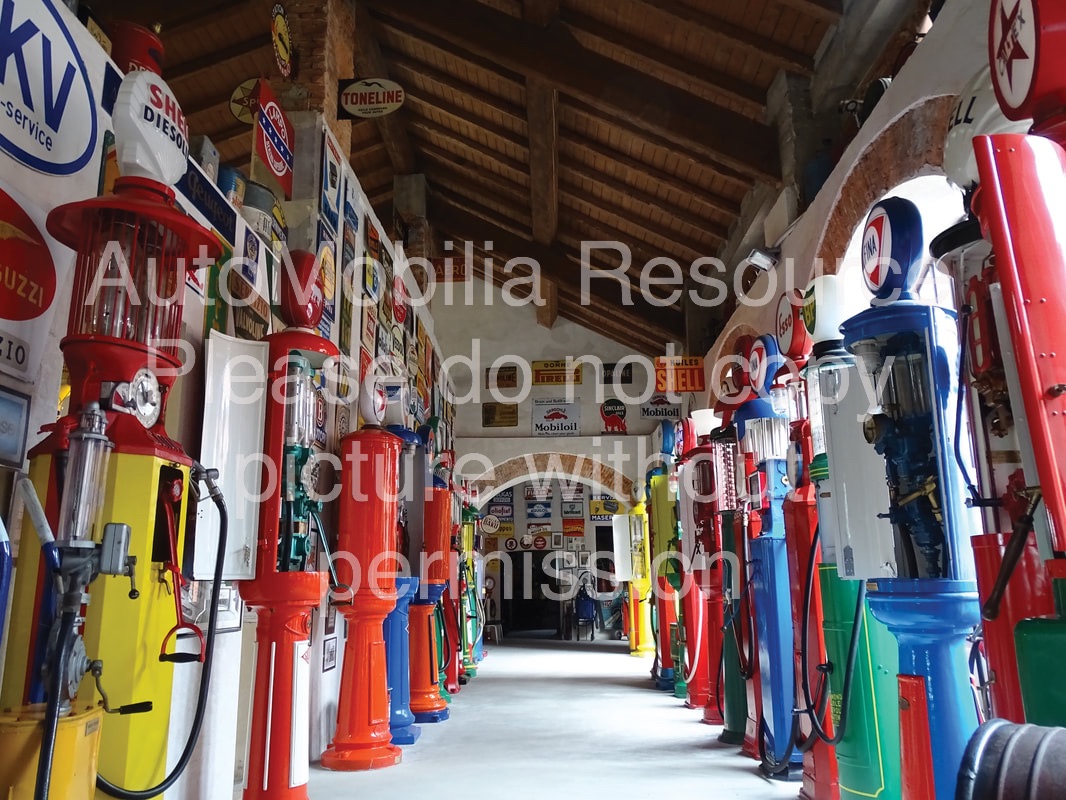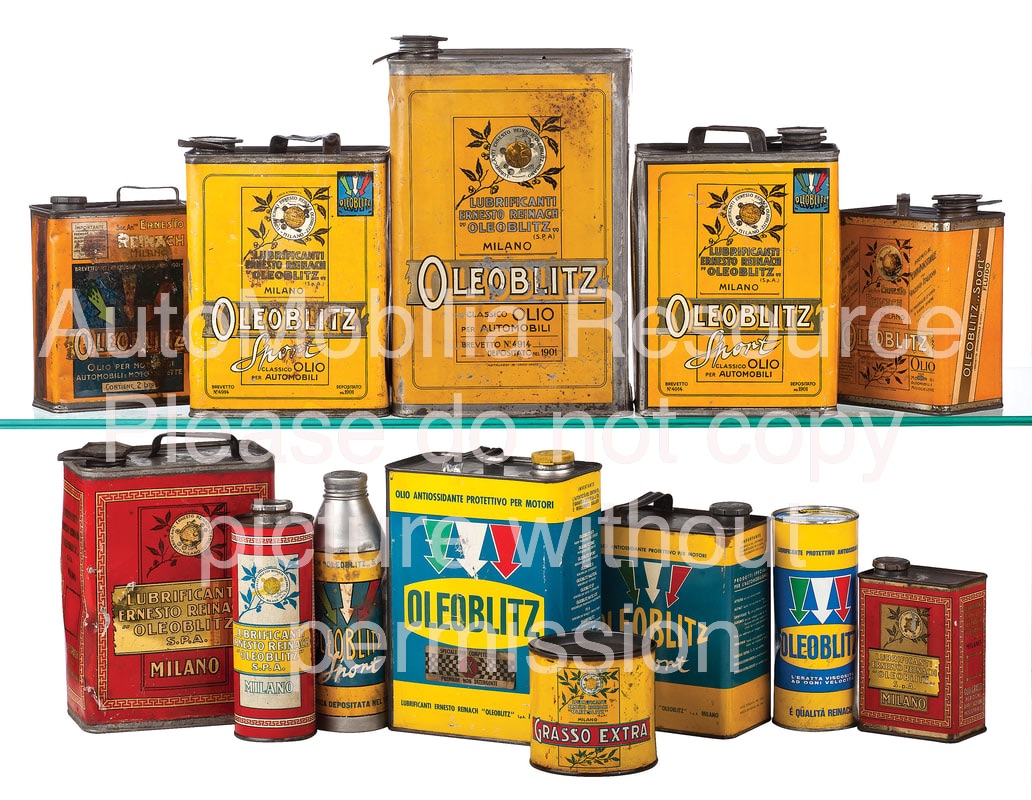|
Sept/Oct 2019 edition Issue #7 AutoMobilia Resource Magazine Allen Spurlin
Mr. Guido, in those days known as “the Accountant Fisogni” can’t really explain the beginning of his passion; he simply says, “when I found old fuel pumps, instead of throwing them away like everybody else, I started to collect them; I found the electric ones during my work, while I purposely looked for the oldest ones. Sometimes I wonder how I managed to collect all these objects.” At first, Guido personally restored his pieces, but his business began to grow, and “after 10 years I had 110 employees,” so he found a worker “only to recondition the pumps.” Guido explains sadly; “In the early years, Alfredo Cattaneo took care of them,” but he soon passed away, and his work was assigned to Giuseppe Croce, who described it in an old interview, as “a work unparalleled in the world.” “I was born in the fuel – Croce now explains – I started working when I was 13, in a company in Milan. I always got along with Mr. Fisogni. We thought in the same way. Obviously, I loved that work, otherwise I would have kept proceeding with my old job”. The restoration of gas pumps was often a difficult and tiring work. They often were in bad shape, and it wasn’t easy to find spare parts and original projects. (Internet did not yet exist); “I saw all those old pumps when I was a boy,” – Croce explains – “so I started from my memories, but I also used photos and old drawings, particularly for English or American models. I often found pieces from other pumps or, if I couldn’t, I had to overhaul them, one by one. Fortunately, with experience, the work became easier. The oldest fuel pumps in the Museum are now potentially operating. And Fisogni also had a personal garage at the company, with tools and equipment, everything was done to ease this work.” Fisogni’s collection also contains gadgets, signs and tools, and a rich archive with unique and impossible to find documents, like the original projects of Bergomi, an Italian company, which produced fuel pumps during the 1920s and 1930s. So, there was also the need to organize the collection, with a partial catalog and a reorganization of documents, which are now available for scholars. “Engineer Enrico Castruccio took care of the archive – says Mr. Fisogni – He wasn’t my employee, a friend introduced him. He is an engineer, but he has a passion for historical topics.” Mr. Castruccio remembers his work well for the Fisogni Museum, with which he collaborated until Mr. Fisogni sold his company in 2000, and the Museum was closed for lack of space (it re-opened only in 2015, when it moved to its current location in Tradate). “For a long time – Castruccio says – I have dedicated myself to the history of things. As an engineer, I always considered this theme very interesting, and I started to study objects, their functioning and their history, and I understood the importance of collecting them. It is the history of work in the 20th century, which is made from objects. So, I became a specialized journalist, and I wrote articles and books about collectors and histories of things, which is the history of culture, marketing, design and also business history; and for a long time, I worked in Guido Fisogni’s Museum.” It wasn’t an easy job, “there were many limits, and we had to work by priority; we were often forced to change direction, because it was hard to find documents and information.” Despite the difficulties, this work brought great satisfaction, from the publicity for Fisogni’s company, and the Guinness World Record, to the recent renovation of Castiglioni Mansion in Tradate, which hosts the Museum. The Museum is also full of curiosities, like the Phillips 66 cowboy, that winks at people, or the ancient motor oil cans of Oleoblitz…very similar to olive oil cans, which provided “constant stomach-aches to the illiterate who bought it in the early 1900s!” The most beautiful pieces? All of them for Alfredo Cattaneo, who isn’t able to choose a favorite one; the French pumps for Enrico Castruccio, because of their Art Nouveau design; the first one for Guido Fisogni, that old Bergomi fuel pump found in a sandpit nearly 60 years ago.
Guido Fisogni’s collection has been developed with years of hard work and passion, and thanks to the efforts of many people who managed to work in conjunction; these efforts have brought the little collection that started in 1966 to the outstanding collection it is today, which leaves most visitors breathless. MM To read more great columns like this one from petroleum museum expert Marco Mocchetti...
|
The Fisogni MuseumMarco Mocchetti has been working for the Fisogni Museum of the Petrol Station in Tradate, Italy - taking care of the collection, organizing events, and managing social networks. ArchivesCategories |
Home
|
Subscribe
|
|
Automobilia Resource LLC
1217 Cape Coral Pkwy East #178 Cape Coral, Florida 33904 Main office: 954-579-5280 Subscriptions: 224-558-8955 Editor: 631-258-9887 |
Copyright © 2023 Automobilia Resource LLC. All Rights Reserved

















 RSS Feed
RSS Feed